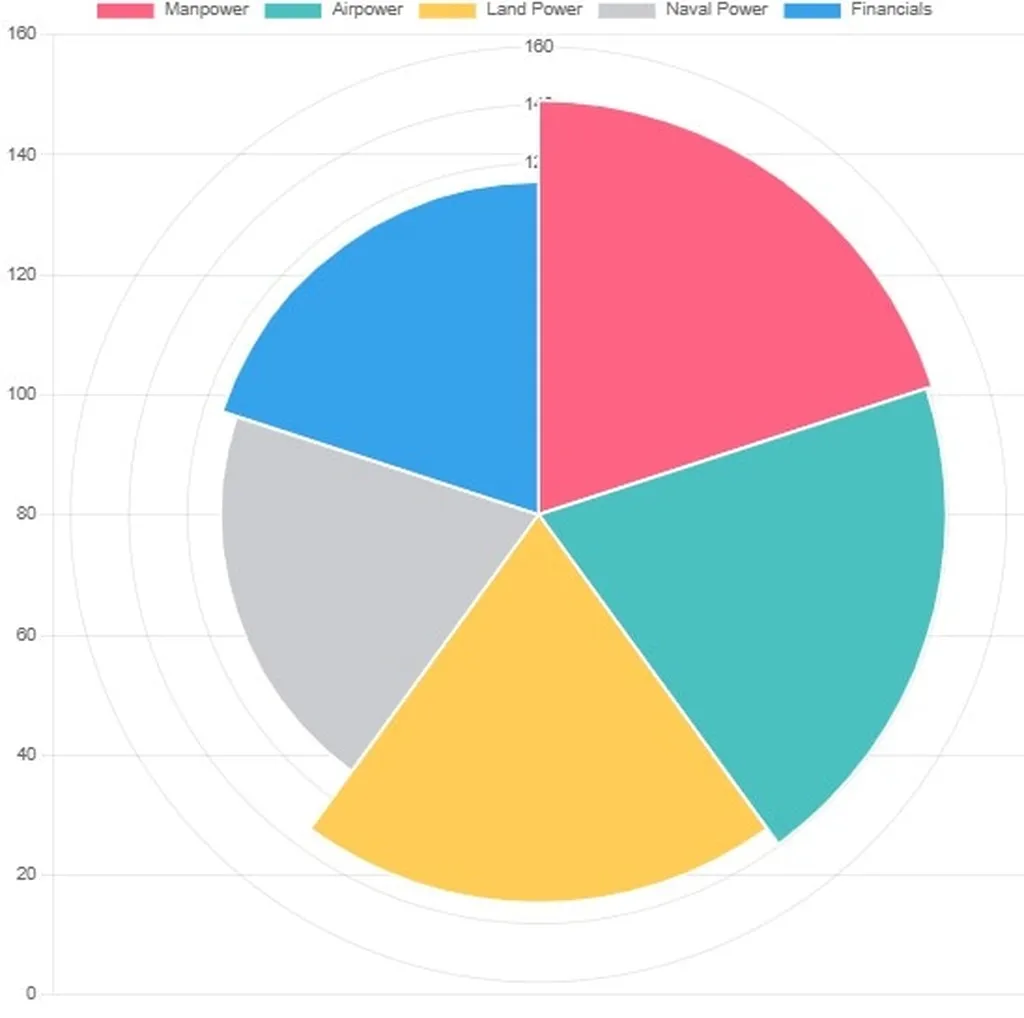In the ever-evolving landscape of global military power, the 2025 Global Firepower Index reveals a dynamic shift in the balance of influence, with Pakistan and Italy emerging as key players among the top 10 most powerful militaries. This ranking, based on over 60 factors including defence budgets, personnel, equipment, and technological capabilities, underscores the importance of strategic positioning, combat experience, and nuclear capabilities in shaping military dominance.
The United States maintains its position at the apex of global military power, with an unparalleled defence budget approaching $831-900 billion. The US military’s technological superiority is evident in its dominance of global airspace, with over 13,000 aircraft, including advanced stealth fighters like the F-22 Raptor and F-35 Lightning II. Complementing this air power is an unmatched naval fleet, featuring 11 aircraft carriers and advanced nuclear submarines that project power worldwide. The US also boasts a formidable nuclear deterrent with approximately 3,700 warheads and leads in cutting-edge military technology, including cyber warfare capabilities and AI-integrated military platforms.
Russia, despite ongoing conflicts, remains a formidable force with the world’s largest nuclear stockpile of approximately 4,500 warheads. Its military excels in land warfare capabilities, possessing over 12,000 tanks and extensive artillery systems. Russia’s sophisticated air defence networks, particularly the S-400 and S-500 systems, provide comprehensive protection against aerial threats and have become sought-after exports worldwide. With approximately 1.3 million active military personnel, Russia maintains substantial conventional forces backed by extensive natural resources.
China’s rapid military modernisation has established it as a rising superpower with significant regional influence and growing global capabilities. Fielding the world’s largest military force with approximately 2.1 million active troops, China is rapidly expanding its naval fleet and developing extensive missile systems. The country’s growing expertise in cyber warfare and electronic warfare capabilities represents a modern approach to conflict that extends beyond traditional battlefields into digital domains. China’s military modernisation is fuelled by the world’s second-largest military budget, supporting massive defence manufacturing capacity and accelerating technological advancement.
India maintains one of the world’s largest militaries with growing technological capabilities and significant regional influence. With over 1.4 million active military personnel, India has developed credible nuclear capabilities and is increasingly relying on indigenous technology development. The country’s growing naval power reflects its ambitions as a major maritime force, featuring aircraft carriers and nuclear submarines that project power across the Indian Ocean region.
The United Kingdom maintains a highly professional and technologically advanced military with global expeditionary capabilities. The UK’s credible nuclear deterrent, formidable naval power, and world-renowned special forces enhance its military reputation. The country’s investment in cutting-edge military technology and strong alliance systems, particularly through NATO partnerships, amplify its military capabilities beyond national resources alone.
South Korea has built a formidable military focused on deterring regional threats while developing advanced indigenous capabilities. With approximately 600,000 active military personnel, South Korea has invested heavily in advanced military technology and has evolved into a significant global player in the defence industry. The country’s strategic position as a key US ally provides access to advanced American military technology while maintaining significant regional influence.
France maintains its position as a major global military power with significant nuclear capabilities and advanced expeditionary forces that project power worldwide. The country operates one of the world’s most sophisticated nuclear deterrents and possesses a highly professional military with global expeditionary capabilities.
The emergence of Pakistan and Italy among the top 10 most powerful militaries highlights the evolving nature of global security dynamics. Pakistan’s growing nuclear arsenal and expertise in high-altitude warfare, combined with Italy’s advanced naval fleet and NATO-backed air power, demonstrate the importance of regional influence and strategic positioning in shaping military power.
As these nations continue to invest in advanced military technology and strengthen their strategic alliances, the global military landscape is set to undergo significant transformations. The 2025 Global Firepower Index serves as a critical benchmark, providing insights into the evolving capabilities and strategic priorities of the world’s most powerful militaries. This dynamic environment underscores the need for continuous innovation, strategic collaboration, and adaptability in the face of emerging threats and challenges.

